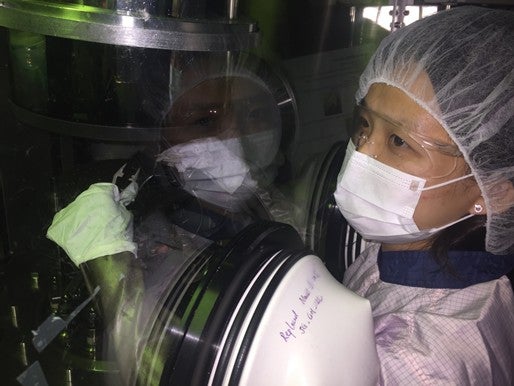Polarons for flexible electronics
Peter HO, CHUA Lay-Lay and PNG Rui-Qi ((Group Leaders, Physics and Chemistry) ) October 31, 201631 Oct 2016. NUS scientists have published a report to revise the 30-year old polaron band model for doped organic semiconductors.
Polarons are electrical charges produced by oxidation or reduction of the organic semiconductor to emit positive charges (holes) or negative charges (electrons), respectively, in the semiconductor molecule or polymer. These polarons can move about in the presence of an electric field, making the organic semiconductor capable of carrying electricity. They are thus fundamental to the science and technology of organic semiconductors.
For nearly 30 years now, scientists have assumed that these polarons reside in the bandgap of the semiconductor. The problem with this model is that it does not agree with some of the experimental data.
Now a team led by Prof Peter HO and Dr Rui-Qi PNG from the Department of Physics, together with Prof Lay-Lay CHUA from the Department of Chemistry, has systematically demonstrated that the workfunction in some new doped organic semiconductors can be made anomalously deeper than its ionisation potential. This is a conundrum that can only be resolved by discarding the old model, and replacing it with one that correctly treats certain types of electron-electron interactions.
The significance of the new model is that it allows, for the first time, quantitative prediction of the workfunction of doped organic semiconductors. Workfunction is an important property that determines how well the material can inject electrons or holes into other semiconductors.
“This new model changes the way we think about workfunction,” says Rui-Qi. “It also explains how to design materials with ultrahigh and ultralow workfunctions to make good electrical contacts to advanced semiconductor devices. These are important for the flexible electronics industry.”

Image shows Rui-Qi Png making flexible electronic devices in the glovebox.
Reference
Png RQ*; Ang MCY; Teo MH; Choo KK; Tang CG; Belaineh D; Chua LL; Ho PKH*, “Madelung and Hubbard interactions in polaron band model of doped organic semiconductors”, NATURE COMMUNICATIONS Volume: 7 Article number: 11948 DOI: 10.1038/ncomms11948 Published: 2016


